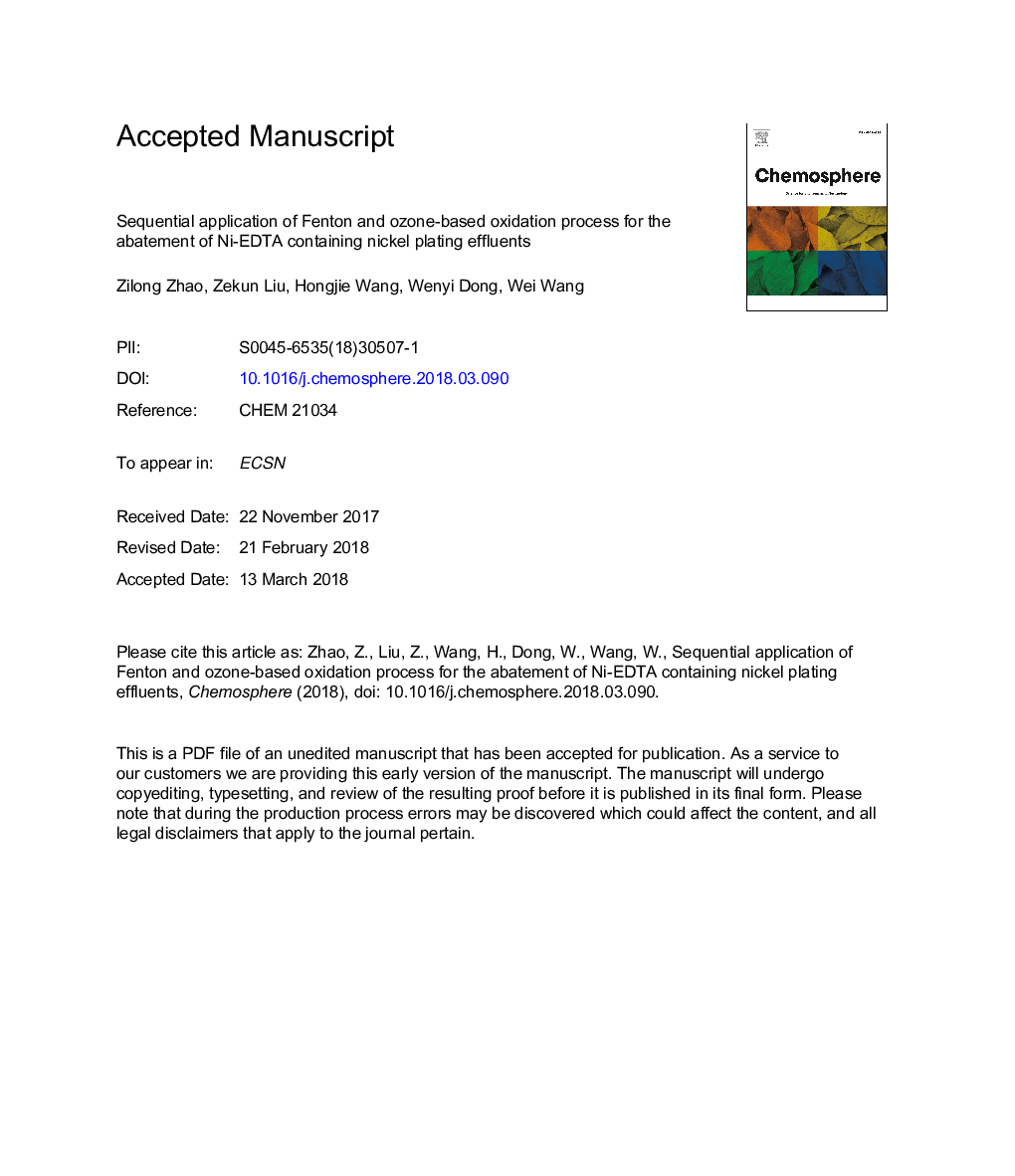| کد مقاله | کد نشریه | سال انتشار | مقاله انگلیسی | نسخه تمام متن |
|---|---|---|---|---|
| 8851534 | 1618769 | 2018 | 34 صفحه PDF | دانلود رایگان |
عنوان انگلیسی مقاله ISI
Sequential application of Fenton and ozone-based oxidation process for the abatement of Ni-EDTA containing nickel plating effluents
دانلود مقاله + سفارش ترجمه
دانلود مقاله ISI انگلیسی
رایگان برای ایرانیان
موضوعات مرتبط
علوم زیستی و بیوفناوری
علوم محیط زیست
شیمی زیست محیطی
پیش نمایش صفحه اول مقاله

چکیده انگلیسی
Treatment of Ni-EDTA in industrial nickel plating effluents was investigated by integrated application of Fenton and ozone-based oxidation processes. Determination of integrated sequence found that Fenton oxidation presented higher apparent kinetic rate constant of Ni-EDTA oxidation and capacity for contamination load than ozone-based oxidation process, the latter, however, was favorable to guarantee the further mineralization of organic substances, especially at a low concentration. Serial-connection mode of two oxidation processes was appraised, Fenton effluent after treated by hydroxide precipitation and filtration negatively affected the overall performance of the sequential system, as evidenced by the removal efficiencies of Ni2+ and TOC dropping from 99.8% to 98.7%, and from 74.8% to 66.6%, respectively. As a comparison, O3/Fe2+ oxidation process was proved to be more effective than other processes (e.g. O3-Fe2+, O3/H2O2/Fe2+, O3/H2O2-Fe2+), and the final effluent Ni2+ concentration could satisfied the discharge standard (<0.1â¯mgâ¯Lâ1, China) under the optimal conditions (H2O2 dosage of 1.0â¯mLâ¯Lâ1, Fe2+: H2O2 mole ratio of 1.46, and reaction time of 10â¯min for Fenton reaction, initial influent pH of 3.0, O3 dosage of 252â¯mgâ¯Lâ1, Fe2+ of 150â¯mgâ¯Lâ1, and reaction time of 30â¯min for O3/Fe2+ oxidation). Furthermore, pilot-scale test was carried out to study the practical treatability towards the real nickel plating effluent, revealing the effective removal of some other co-existence contaminations. And Fenton reaction has contributed most, with the percentage ranging from 72.41% to 93.76%. The economic cost advantage made it a promising alternative to the continuous Fenton oxidation.
ناشر
Database: Elsevier - ScienceDirect (ساینس دایرکت)
Journal: Chemosphere - Volume 202, July 2018, Pages 238-245
Journal: Chemosphere - Volume 202, July 2018, Pages 238-245
نویسندگان
Zilong Zhao, Zekun Liu, Hongjie Wang, Wenyi Dong, Wei Wang,